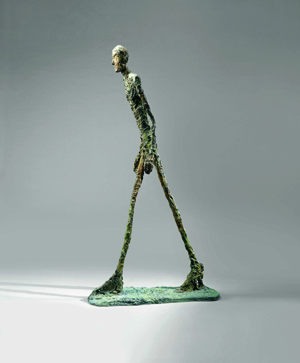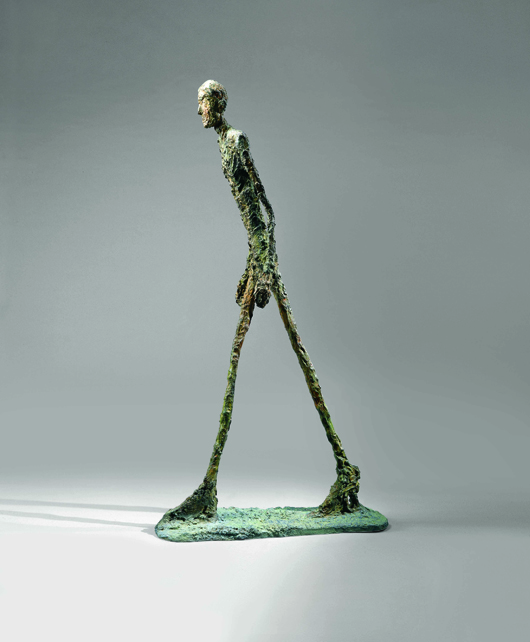
ROME (AFP) – The striking, skeletal forms of Swiss sculptor Alberto Giacometti are juxtaposed with corpulent neo-classical and baroque Italian masterpieces in a new exhibition in Rome exploring the evocative power of the human body.
Forty Giacometti gems, including his famous spindly Walking Man in bronze, have been scattered around the permanent collection at the Villa Borghese Gallery in the Italian capital, dotted in among classics such as Bernini’s David or Canova’s Pauline Borghese.
The contrast is dramatic: the Swiss sculptor’s works are emblems of fragility, the bones left after the artist has dug flesh and soul away, while the Italian creations draw wonder for their exquisite depiction of flesh – muscles rippling, fingers appearing to leave marks on soft skin.
His 1929 Reclining Woman Who Dreams and 1950 Man Falling steal away the gazes of viewers from weighty masterpieces such as Bernini’s harrowing 1625 Apollo and Daphne.
“This is not a competition between the statues, but the chance to look how they differ and what they have in common, notably the representation of the human being, the body,” Anna Coliva, the museum’s director, told AFP.
The exhibition’s curator, Christian Klemm, a world expert on the Swiss sculptor, said that Giacometti was “one of the rare modern sculptors to have a very thought-out relationship with the past,” in particular with the ancient Egyptians and their “very stylized, frontal, almost-symmetrical form.”
It was during a grand tour in Italy in 1920 and 1921, from Venice and Rome to Naples and Pompei, that Giacometti had his first encounter with neoclassical and baroque art – to which he added a trip to the Egyptian museum in Florence as well.
But, according to Coliva, he quickly understood “the painful impossibility” for modern art to represent humans in a monumental fashion.
Giacometti (1901-1966) created his first Man Walking piece in 1946, as a monument in Paris to the victims of the Nazis.
The series of differing Man Walking statues which would follow recall “Egyptians coming out of a tomb,” according to Klemm, who said they evoke a sense of great strength despite their feeble forms.
But Giacometti did not slim his figures down just to represent war horrors. He was influenced by existentialism while working in Paris between the two World Wars, and it helped him capture the suffering condition of modern man.
Compared with the opulence and grandeur of the Renaissance, baroque and neoclassical works that surround them, Giacometti’s creations blaze with an inner energy.
“Some of Giacometti’s works on show here are over three meters tall, and yet they seem almost transparent compared to the classical statues that surround them,” Coliva said.
“Giacometti, Sculpture” runs at the Villa Borghese Gallery in Rome from Feb. 5 to May 25.
ADDITIONAL IMAGE OF NOTE



